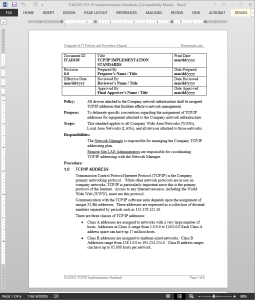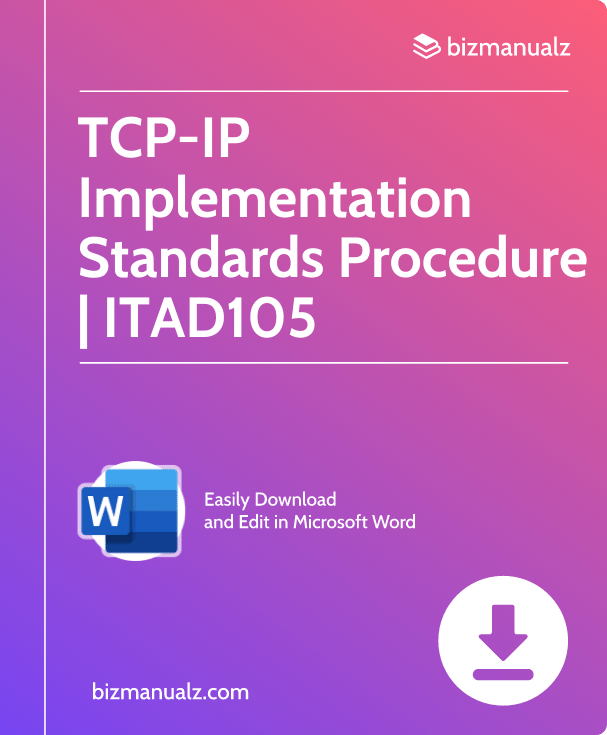TCP-IP Implementation Standards Procedure Template Word
The TCP-IP Implementation Standards Procedure Template Word is a comprehensive document that outlines the standards and procedures for implementing TCP-IP protocols in your organization. This template is designed to help you establish a consistent and reliable network infrastructure that meets industry standards and best practices.
The TCP-IP Implementation Standards Procedure Template Word includes detailed instructions for configuring and managing TCP-IP protocols, as well as guidelines for troubleshooting common network issues. The template also provides a framework for documenting your network infrastructure, including IP addresses, subnet masks, and other important information.
With the TCP-IP Implementation Standards Procedure Template Word, you can ensure that your network infrastructure is secure, reliable, and efficient. The template is easy to customize to meet the specific needs of your organization, and it can be used by IT professionals, network administrators, and other stakeholders.
Key features of the TCP-IP Implementation Standards Procedure Template Word include:
- Step-by-step instructions for configuring and managing TCP-IP protocols
- Guidelines for troubleshooting common network issues
- A framework for documenting your network infrastructure
- Customizable to meet the specific needs of your organization
- Easy to use by IT professionals, network administrators, and other stakeholders
Overall, the TCP-IP Implementation Standards Procedure Template Word is an essential tool for any organization that wants to establish a reliable and secure network infrastructure. With this template, you can ensure that your network is configured and managed according to industry standards and best practices, and that your organization is well-positioned to meet the challenges of the digital age.
TCP-IP Implementation Standards Procedure
The TCP-IP Implementation Standards Procedure defines specific standards regarding assignment of TCP and IP addresses for equipment attached to your company’s network infrastructure. The procedure facilitates effective network management. The TCP/IP implementation standards apply to all company Wide Area Networks (WANs), Local Area Networks (LANs) and all devices attached to those networks. (6 pages, 1145 words)
Transmission Control Protocol/Internet Protocol (TCP/IP) is the company primary networking protocol. While other network protocols are in use on company networks, TCP/IP is particularly important since this is the primary protocol of the Internet. Access to any Internet resource, including the World Wide Web (WWW), must use this protocol. Communication with the TCP/IP software suite depends upon the assignment of unique 32-Bit addresses.
TCP-IP Implementation Standards Responsibilities:
The Network Manager is responsible for managing the company TCP/IP addressing plan.
Remote Site LAN Administrators are responsible for coordinating TCP/IP addressing with the Network Manager.
 TCP-IP Implementation Standards Procedure Activities
TCP-IP Implementation Standards Procedure Activities
- TCP/IP Address
- Dynamic Host Configuration Protocol (DHCP)
- Network Address Translation
- Subnet Addressing Standards
- WAN Link Addressing Conventions
TCP-IP Implementation Standards Procedure References
- Sarbanes-Oxley Act of 2002






















Reviews
There are no reviews yet.